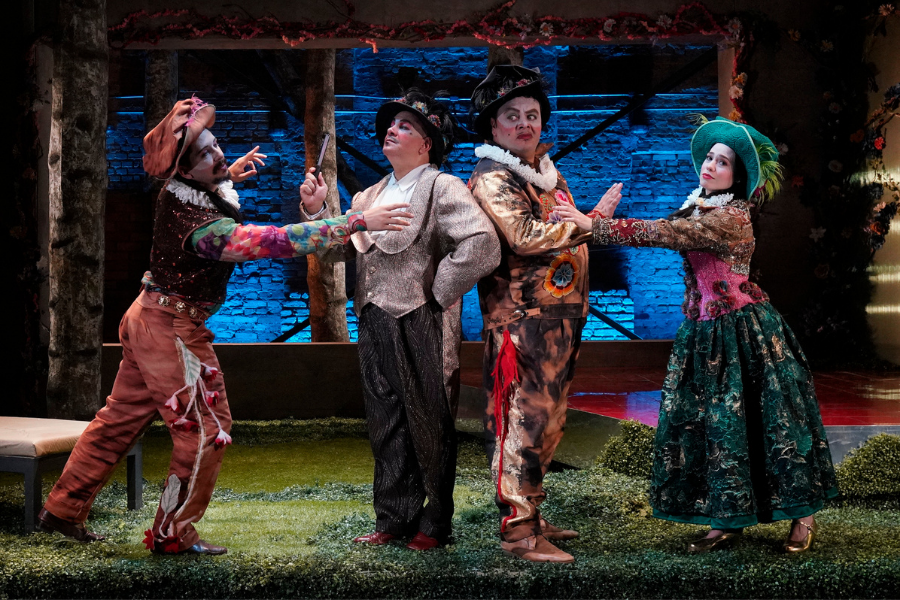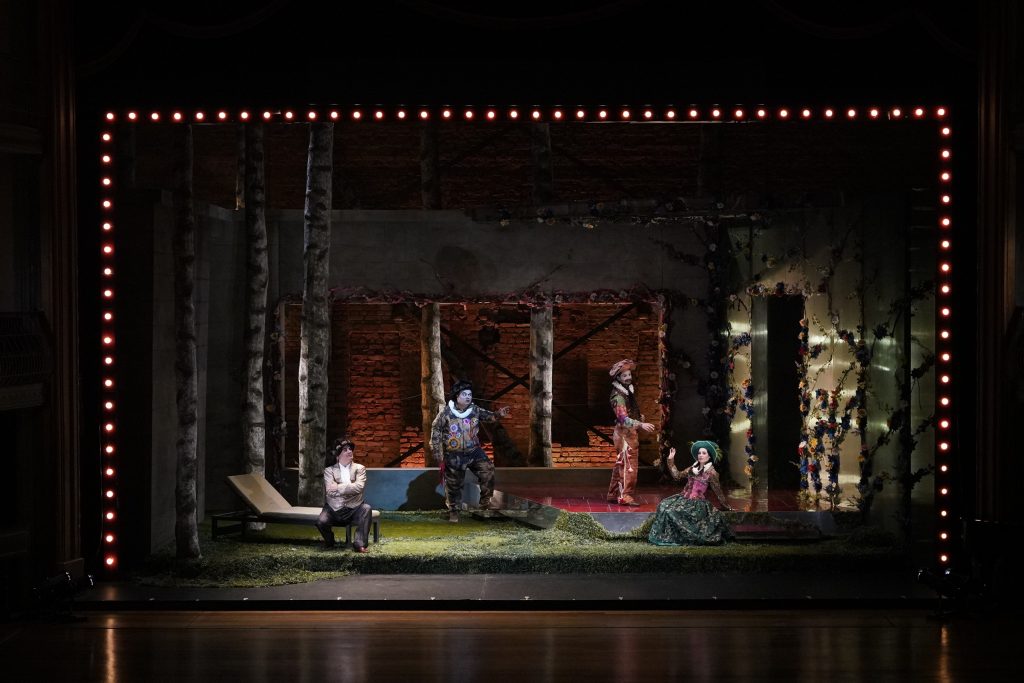The Theatro São Pedro premieres “El Señor Bruschino” by Gioachino Rossini

The unpublished montage has the musical direction of Cláudio Cruz, staging and lighting by Caetano Vilela, costumes by Gabriel Villela and scenography by Duda Arruk. The premiere will be on December 3. The show will also have a free live stream on December 9.
The São Pedro Theatro, an institution of the São Paulo State Government and the State Secretariat of Culture and Creative Economy, managed by the social organization Santa Marcelina Cultura, closes the lyrical season with the premiere in December of the opera Mr. Bruschino, by Gioachino Rossini (1792-1868) and libretto by Giuseppe Maria Foppa (1760-1845).
With staging and lighting by Caetano Vilela, the assembly will have the musical direction of Cláudio Cruz, who will command the São Pedro Theater Orchestra. The costumes are by Gabriel Villela, who also signs the visagismo, and the scenography is by Duda Arruk.
Saulo Javan plays Bruschino (father) and Savio Sperandio is Gaudenzio. The cast is completed by Lina Mendes (Sofía), Daniel Umbelino is Florville (Sofía’s lover), Fernanda Nagashima, Mariana (maid), Gustavo Lassen, Filiberto (host), Fellipy Oliveira, police officer and Eduardo Gutiérrez, Bruschino (son).
Gioachino Rossini was born in 1792 in the Italian city of Pesaro and at the age of 18 he composed his first opera. Master of humor and with great sensitivity his great public success came early, at age 21, with titles such as Tancredo and L’Italiana en Algeri.
In the next twenty years, he composed some forty works, reaching the point of presenting four or five titles to the public in the same year.
Mr. Bruschino
Called a one-act playful farce, Senor Bruschino premiered on January 27, 1813 in Venice, and was the last of the five comic operas that the Italian composer wrote for the Teatro de San Moisè. Breaking the stereotype of Italian opera, Bruschino abandoned disguise and argumentation and used interesting music and techniques to describe reality, in which people alternate between anguish and joy. The opening caused a scandal at the premiere, as Rossini asks the second violins to strike the bow on the sheet music shelves. In Italy, the opera was performed only once in the 19th century.
The libretto was based on the French text Le fils Par Hazard in which a young man from a wealthy family, Florville, poses as another, in this case the son of Bruscchino. Florville is moved by the intention of winning the hand of Sophia, protected by Gaudenzio. In Giuseppe Maria Foppa’s libretto, the young Florville still manages to convince Gaudenzio that he is actually Bruscchino’s son and together they try to convince Bruscchino that he is Florville’s father. As if that were not enough, the real son of Bruscchino arrives, an inveterate gambler, who contracted his life from him.
“What makes the opera interesting is how Rossini surprises through the music, giving personality to each character involved in the conflict. It is a lean opera, with only eight characters, no distractions with extras or chorus, and here it is not enough to sing very well, everyone needs to be excellent actors, “says Caetano Villela.
For the design of the show, the director Cláudio Cruz highlights the importance of the costumes. “I decided to tell this story by giving prominence to the costumes and, for this, I invited the director and costume designer Gabriel Villela, who in his stage creations has a very elaborate job of rereading a baroque aesthetic. His collaboration was essential for the general concept of staging. on stage, “says the director.
“The lighting frames the scene as if it were a large dressing room mirror, dialogues with the singers giving a meta-theater reading, of the theater within the theater. The opera libretto aims in this way to deconstruct the characters, allowing them, in their thoughts, dialogue with the public “, adds Caetano Villela, who also signs the lighting of the montage.





